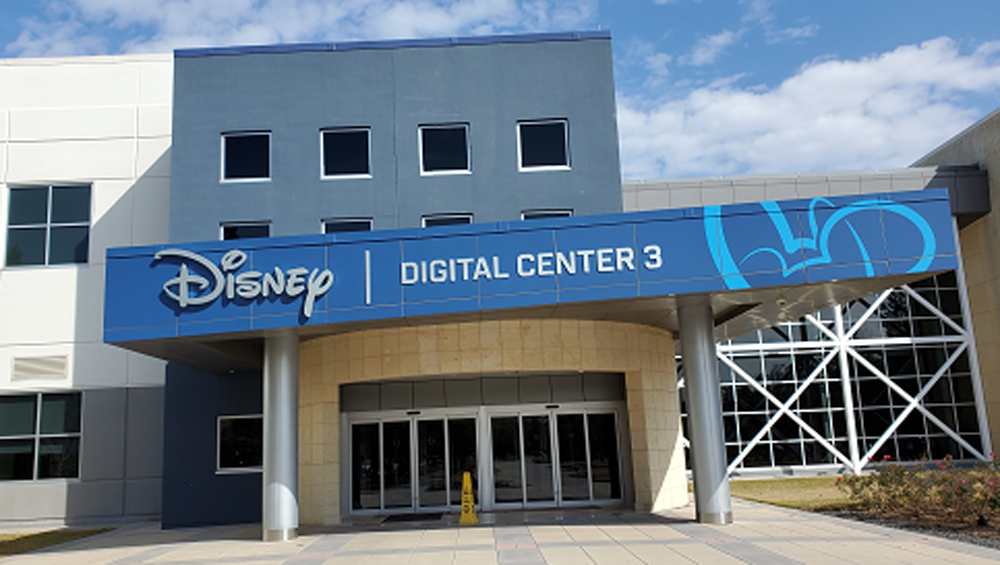
New Facilities Insider | Disney’s Digital Center 3 Centralizes Hardware, Allows Control From Anywhere

Disney has streamlined operations for its broadcast and entertainment networks by consolidating playout, transmission and media operations at a new technical hub in The Woodlands, Texas, some 30 miles north of Houston.
The new facility, dubbed Digital Center 3 (DC3), has centralized playout functions that were previously spread across data centers in New York, North Carolina, Las Vegas and the Los Angeles area. It also connects directly via fiber to ESPN headquarters in Bristol, Conn., to help facilitate feed distribution and provide redundancy, giving Disney a two-facility architecture that supports all of its entertainment and sports networks. The new facility is named DC3 because it is actually the third such technical playout hub created by Disney, with the first two, Digital Center 1 and 2, already situated in Bristol.
The massive 187,000-square-foot plant in The Woodlands was acquired as part of the 2019 Disney-Fox merger and previously served as the technical hub for the Fox regional sports networks. The RSNs, now owned by Sinclair, are still originating from The Woodlands under a transitional service agreement (TSA) from the Disney-Fox deal but will move this summer to a new master control facility at Encompass in Atlanta.
Disney has already finished its TSA work supporting the Fox broadcast network and cable nets FS1 and FS2 from the Pico Boulevard facility it acquired in Los Angeles, though some Fox employees still remain on the lot.
Core Plant And Architecture
Disney’s core technical plant of control and machine rooms comprises 30,000 square feet and some 300 on-site personnel. DC3 is currently originating 28 linear feeds, including ABC’s East, Central, Mountain and West feeds that are distributed to affiliates via Intelsat satellite; four “national” ABC feeds that are sent to OTT/apps partners via fiber; eight “Disney Cables” including East and West feeds of Disney Channel, Disney Junior, Disney XD and Freeform; five FX feeds including FX, FXM and FXX; four National Geographic feeds including Nat Geo, Nat Geo Wild and Nat Geo Mundo; and disaster-recovery feeds of the sports networks ESPN, ESPN2 and SEC Network.
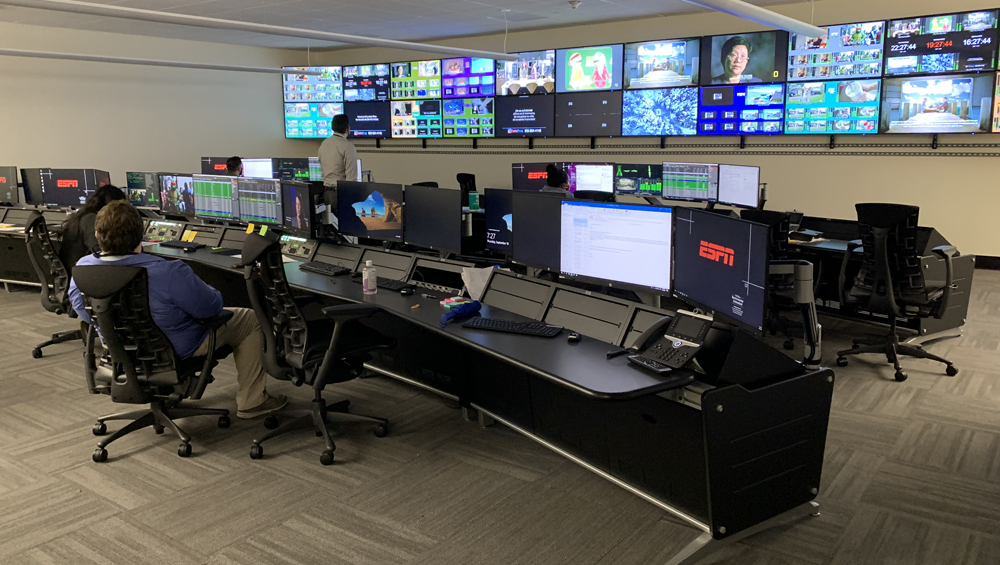
Part of a control room (Sam Exley photo)
The architecture of DC3 is based on technology development that Disney started in 2015, when it began moving to a private cloud model for network playout and making heavy use of ESPNet, the robust managed fiber network connecting ESPN operations across the country. That project morphed over time, as Disney found that the data center model that was successful for the cable networks didn’t translate as well to the live production requirements of the ABC network given latency issues between North Carolina and New York. Thus, ABC wound up locating its data center on-premise at its broadcast center in New York.
However, the software-based tools that were installed as part of that work, such as Imagine Communications’ Versio playout system, proved very powerful during the COVID-19 pandemic as they allowed ABC to quickly react to facility lockdowns by remotely controlling on-premise hardware. That became even more apparent when comparing notes with other networks during the early days of the pandemic, says Brad Wall, SVP of network/broadcast operations at Disney Media & Entertainment Distribution.
“We had put ourselves in a pretty good position to have a great backup to our operations,” Wall says.
Centralizing Hardware, Access From Anywhere
Disney applied those lessons, as well as what ESPN had learned from similar work on virtualized workflows, to The Woodlands build. Its goal was to locate all of the essential hardware in one spot but provide access and control from anywhere. DC3 is based on a private cloud architecture, with Imagine Versio playout software running on HP servers and linking to Evertz Mediator-X media asset management software. Routing within the plant is traditional HD-SDI, though there are pockets of SMPTE 2110 IP routing capability. And DC3 employs some of the same tools that ESPN uses in Bristol, such as using the Evertz DreamCatcher replay system for quick-turn editing and quick-turn delay feeds.
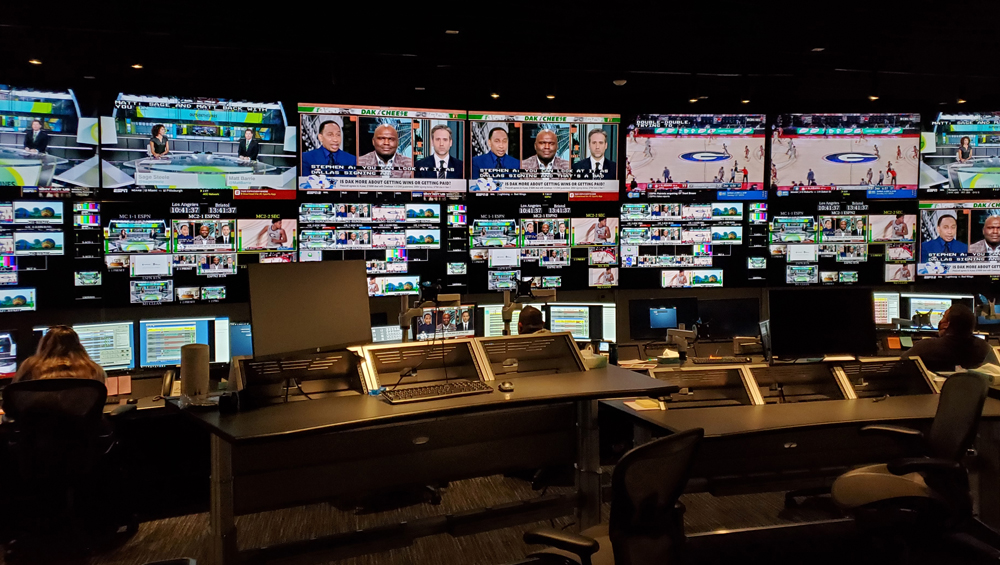
ESPN disaster recovery (Jon Edwards photo)
“That’s really a huge part of it,” Wall says. “We made the decision before the pandemic hit, but the principles and the philosophies that we’ve talked about for years really helped solidify that plan.”
Tight Timing
Timing for the DC3 build was tight, as the decision to consolidate in The Woodlands was made in October 2019 and the first Disney networks began originating from the plant in September 2020. The project started with the FX and National Geographic networks that Disney had acquired from Fox, which needed to get out of their broadcast center on the Pico lot. They were followed by the Disney channels and Freeform, which were already being originated in a private cloud environment from data centers in Kings Mountain, N.C., and Las Vegas. Those networks began playing from The Woodlands by Thanksgiving.
From there Disney turned its attention to the ABC network feeds as well as ESPN’s disaster recovery operations, which had been run out of ESPN’s Los Angeles Production Center (LAPC). The next step in the consolidation will be to bring master control functions and media processing functions for the eight ABC Owned TV Stations, currently hubbed at Encompass, to DC3. That should occur in late 2021 or early 2022.
DMED’s technology and engineering teams handled all of the design for the facility, while Unity Systems Integration performed the bulk of the wiring. Given the social distancing requirements of the COVID-19 pandemic, much of the technical integration work was done remotely, though major vendors like Imagine and Evertz were able to spend some time onsite. Wall’s team also created theater-style training venues so new employees could stay six feet apart.
“A lot of this was done in a time of COVID, so it’s amazing that we met these timelines and milestones that we did,” says Jon Edwards, VP of media engineering at Disney Media & Entertainment Distribution. “It wasn’t always easy, but at the same time the teams were able to work together and get it done.”
Personnel Changes
Disney’s technology consolidation came with significant personnel changes. Any job functions tightly linked to “big iron” hardware, such as technical directors, media operations and content prep, moved to Texas. Meanwhile, many personnel who were able to work remotely through the pandemic, such as program management, saw their job functions remain in place.

The DC3 machine room (Jon Edwards photo)
Program management and traffic log operations for ABC remain in New York, though they are not tethered to any hardware there. Similarly, program management and traffic operations for the cable networks still reside in Burbank, as well as some media ingest and prep functions that are virtualized and can be done anywhere. Everything else has moved to Texas.
Wall says many of the jobs in DC3 were filled by employees who were willing to relocate, either from LAPC, Pico, Burbank Center, Bristol or New York.
“We almost had folks from every one of our existing operations accept relocation to Texas, some of [whom] were traditionally ESPN employees who came over to work on the entertainment side for us,” he says. “That’s been a really good transition because we brought some good institutional knowledge down with us to the facility. Not everybody could make that happen, so we did hire quite a few new folks down in Texas to spin up that operation.”
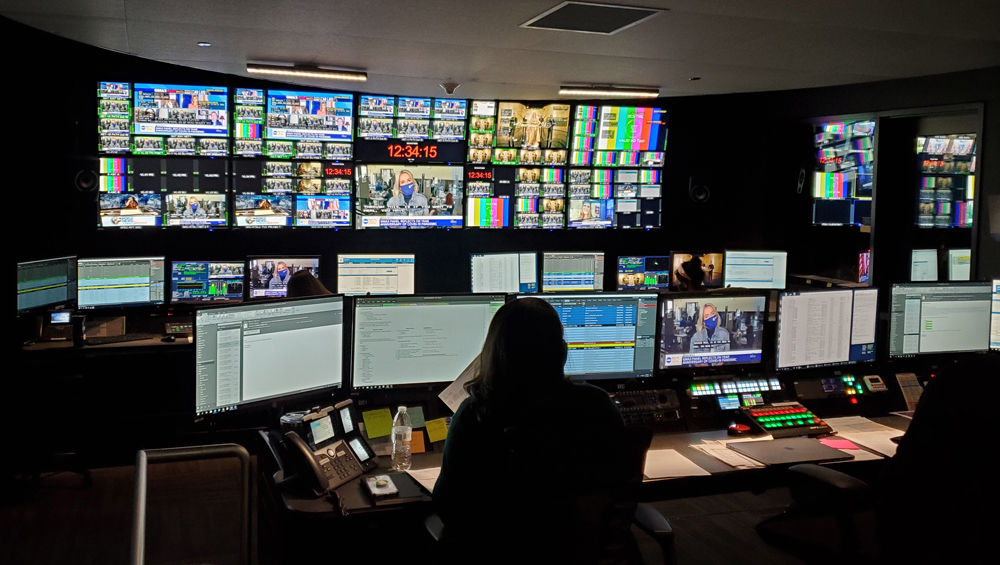
The ABC primary control room (Jon Edwards photo)
Job responsibilities in DC3 are more fluid than they were back in New York. Part of that is a result of new technology, and part of that is a result of being a non-union facility.
“We looked at every possible place that we could streamline the operations,” Wall says. “So instead of having one person that just touches the switcher, one person that just communicates with remotes, one person who just sits at the quick-turn edit station, one person who just does transmission bookings, we’ve really identified new roles with the teams. People are a lot more flexible, there are a lot more ambidextrous workflows being built, and we’re refining them daily.”
Two-Facility Model
While Disney is relying on a two-facility strategy to handle key playout functions, it hasn’t abandoned its existing data centers in North Carolina and Las Vegas. Instead, it has just rolled them into a bigger private cloud environment that also includes The Woodlands and Bristol, Edwards says. That is particularly true when it comes to the Evertz Mediator asset management system, which is spread across the data centers as part of Disney’s overall media supply chain.
Disney makes heavy use of fiber circuits from Lumen (formerly CenturyLink) as part of ESPNet, with a lot of cross-circuits between The Woodlands and Bristol as part of its new two-facility model. LTN Global IP links are used to pull feeds from the ABC owned and affiliate stations, as well as for general entertainment programming applications.
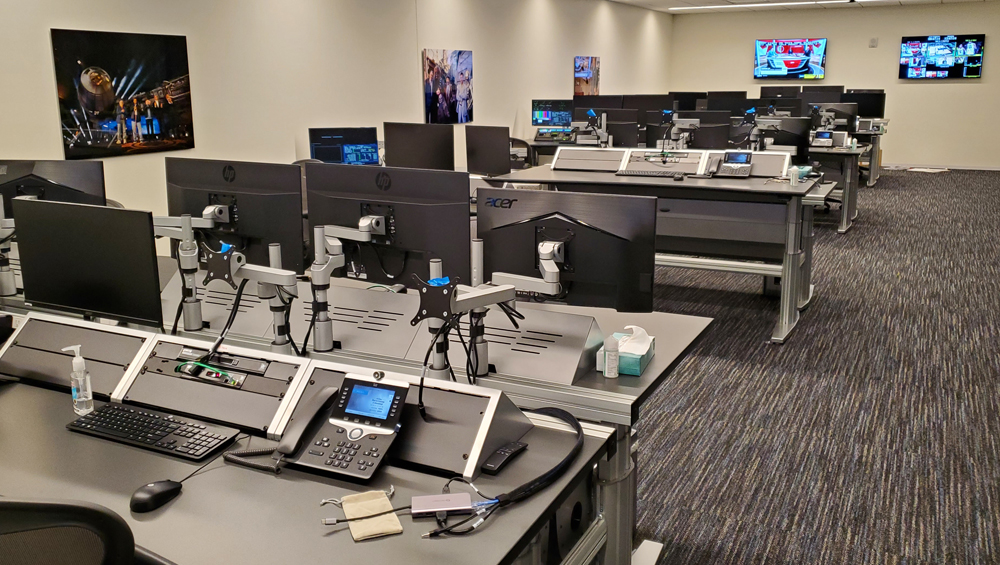
A pre-rollout look at the media bullpen (Jon Edwards photo)
Transmission to broadcast affiliates and smaller MVPDs is still done by traditional satellite via the Intelsat Galaxy 16 and Galaxy 3C satellites, though receive equipment at ABC affiliates has been upgraded to HEVC compression. Digital MPVDs, as well as some larger cable operators, pull their network feeds directly via fiber from two “media rooms,” one located at 60 Hudson in New York and the other in Los Angeles.
“Because DC3 is on ESPNet, and it’s all part of that fiber connection, any feed we create could be easily sent IP and be a fiber to those two media rooms, in a matter of minutes,” Wall says.
































Comments (0)